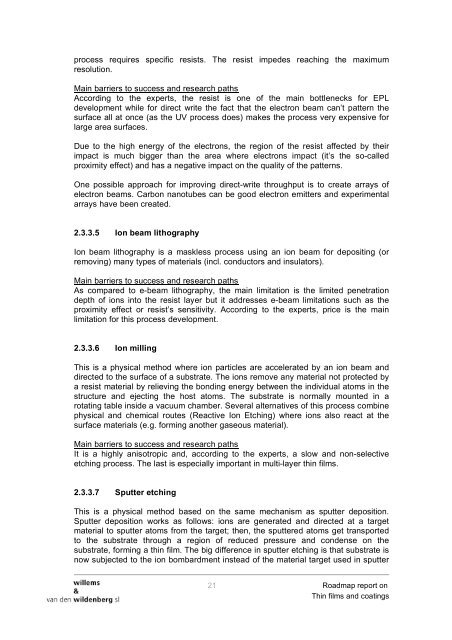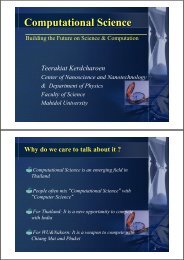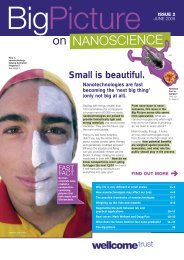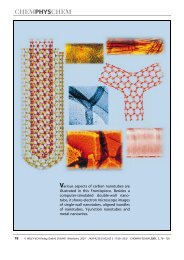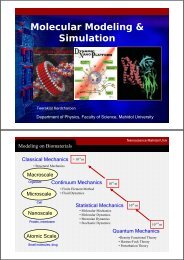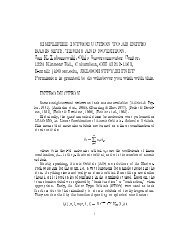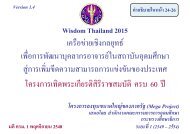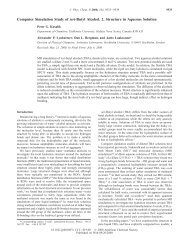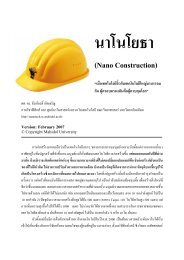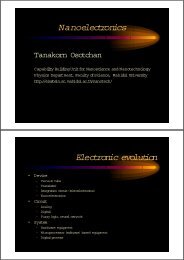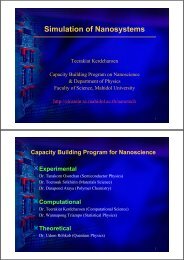'Thin films & coatings' Roadmap - Nano Mahidol
'Thin films & coatings' Roadmap - Nano Mahidol
'Thin films & coatings' Roadmap - Nano Mahidol
You also want an ePaper? Increase the reach of your titles
YUMPU automatically turns print PDFs into web optimized ePapers that Google loves.
process requires specific resists. The resist impedes reaching the maximum<br />
resolution.<br />
Main barriers to success and research paths<br />
According to the experts, the resist is one of the main bottlenecks for EPL<br />
development while for direct write the fact that the electron beam can’t pattern the<br />
surface all at once (as the UV process does) makes the process very expensive for<br />
large area surfaces.<br />
Due to the high energy of the electrons, the region of the resist affected by their<br />
impact is much bigger than the area where electrons impact (it’s the so-called<br />
proximity effect) and has a negative impact on the quality of the patterns.<br />
One possible approach for improving direct-write throughput is to create arrays of<br />
electron beams. Carbon nanotubes can be good electron emitters and experimental<br />
arrays have been created.<br />
2.3.3.5 Ion beam lithography<br />
Ion beam lithography is a maskless process using an ion beam for depositing (or<br />
removing) many types of materials (incl. conductors and insulators).<br />
Main barriers to success and research paths<br />
As compared to e-beam lithography, the main limitation is the limited penetration<br />
depth of ions into the resist layer but it addresses e-beam limitations such as the<br />
proximity effect or resist’s sensitivity. According to the experts, price is the main<br />
limitation for this process development.<br />
2.3.3.6 Ion milling<br />
This is a physical method where ion particles are accelerated by an ion beam and<br />
directed to the surface of a substrate. The ions remove any material not protected by<br />
a resist material by relieving the bonding energy between the individual atoms in the<br />
structure and ejecting the host atoms. The substrate is normally mounted in a<br />
rotating table inside a vacuum chamber. Several alternatives of this process combine<br />
physical and chemical routes (Reactive Ion Etching) where ions also react at the<br />
surface materials (e.g. forming another gaseous material).<br />
Main barriers to success and research paths<br />
It is a highly anisotropic and, according to the experts, a slow and non-selective<br />
etching process. The last is especially important in multi-layer thin <strong>films</strong>.<br />
2.3.3.7 Sputter etching<br />
This is a physical method based on the same mechanism as sputter deposition.<br />
Sputter deposition works as follows: ions are generated and directed at a target<br />
material to sputter atoms from the target; then, the sputtered atoms get transported<br />
to the substrate through a region of reduced pressure and condense on the<br />
substrate, forming a thin film. The big difference in sputter etching is that substrate is<br />
now subjected to the ion bombardment instead of the material target used in sputter<br />
21 <strong>Roadmap</strong> report on<br />
Thin <strong>films</strong> and coatings


